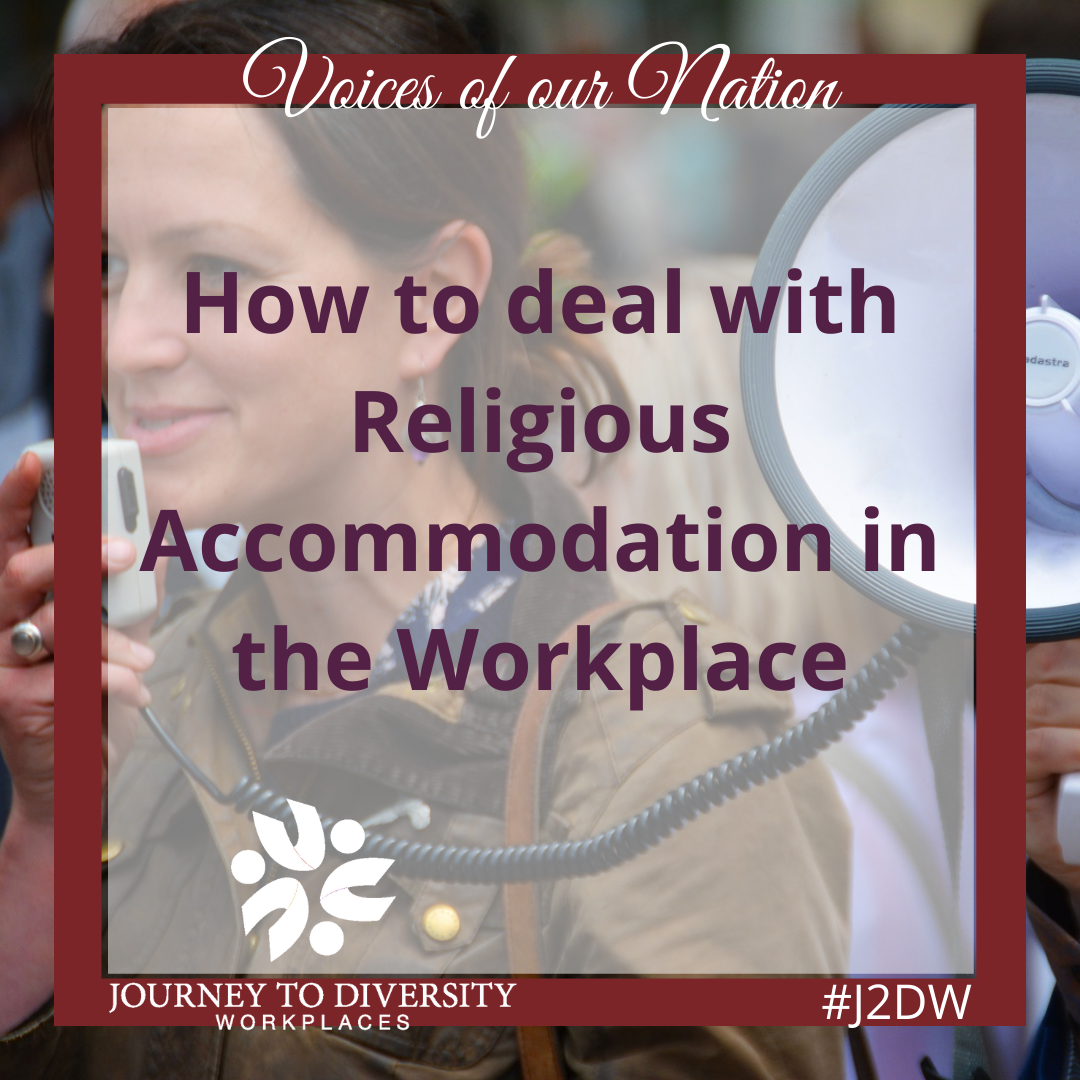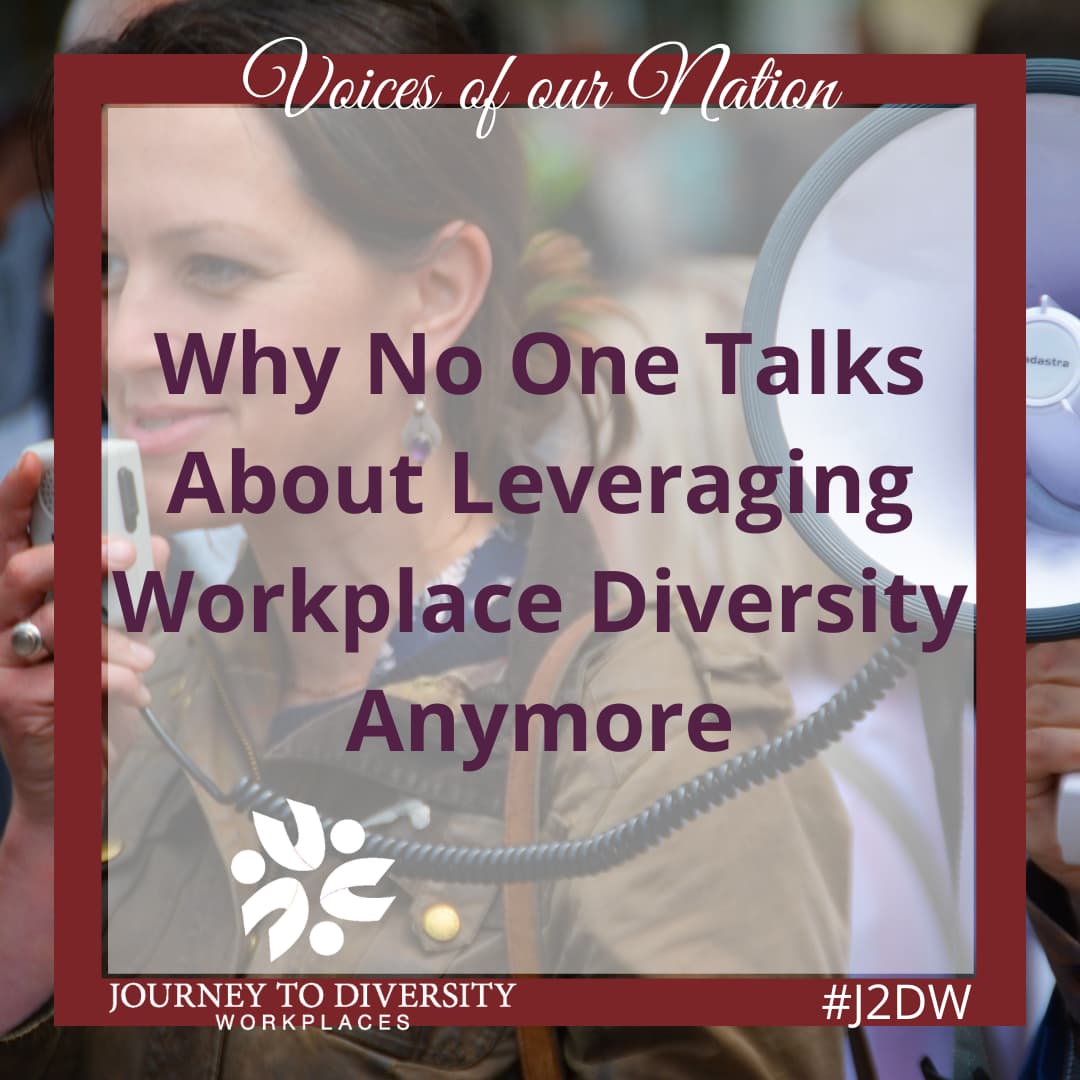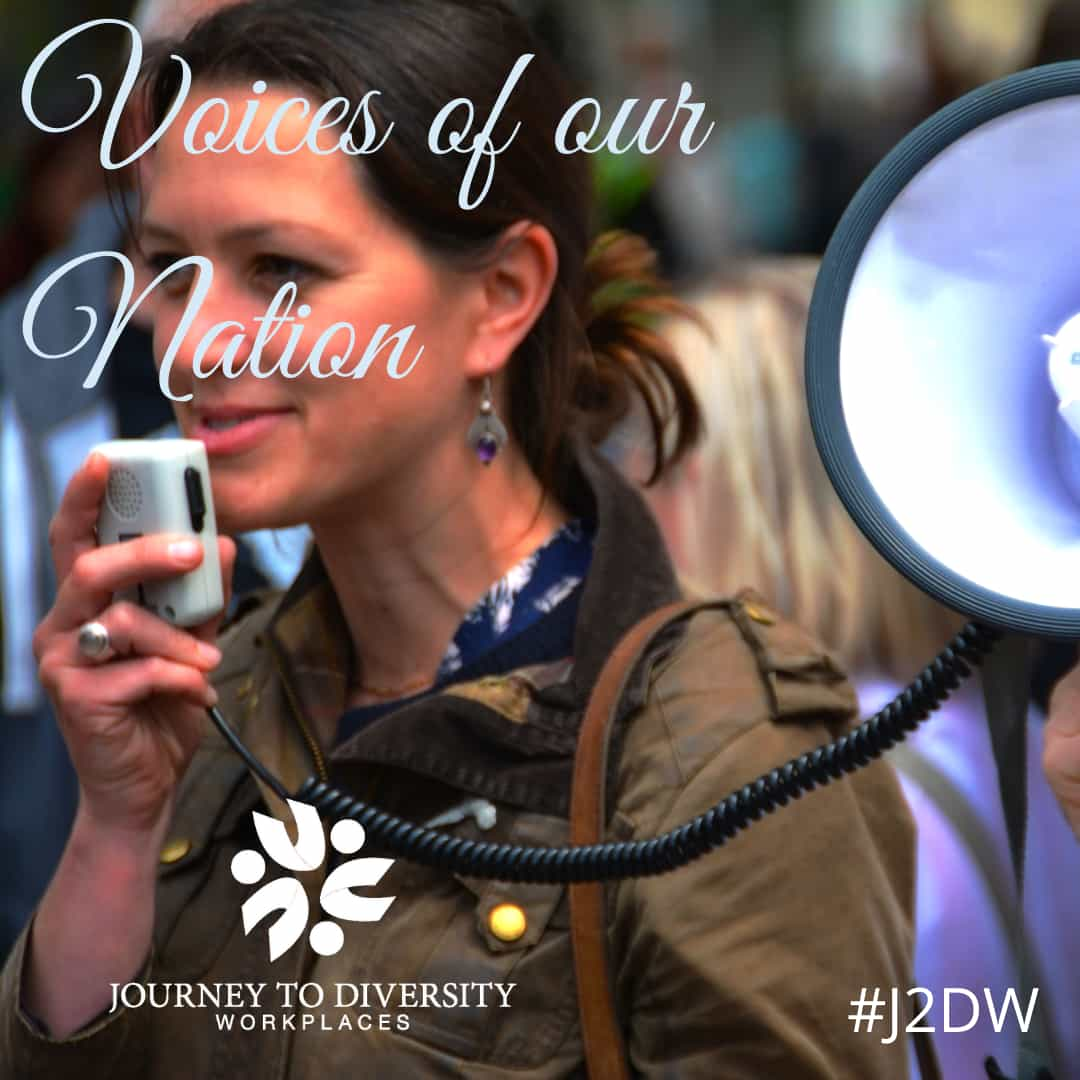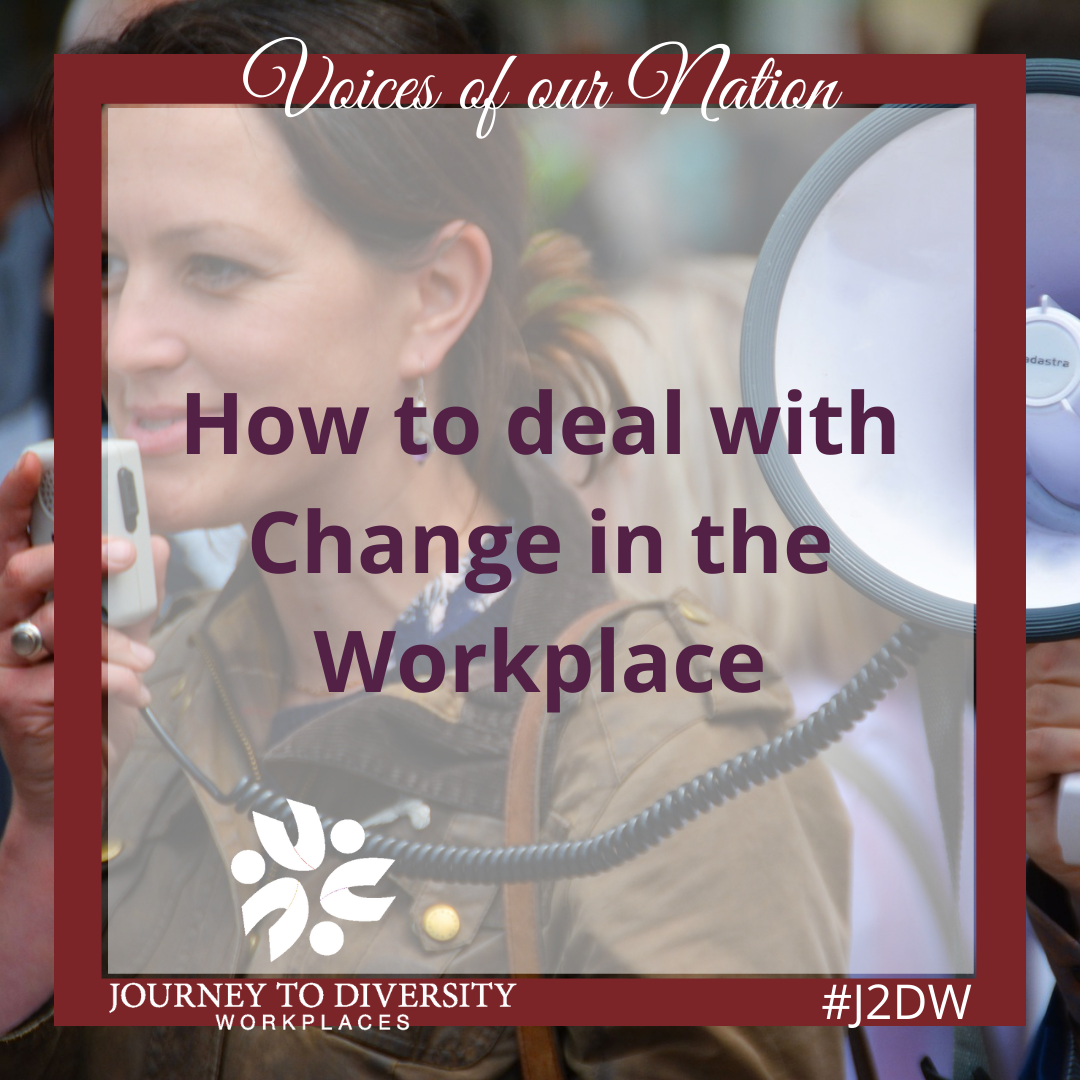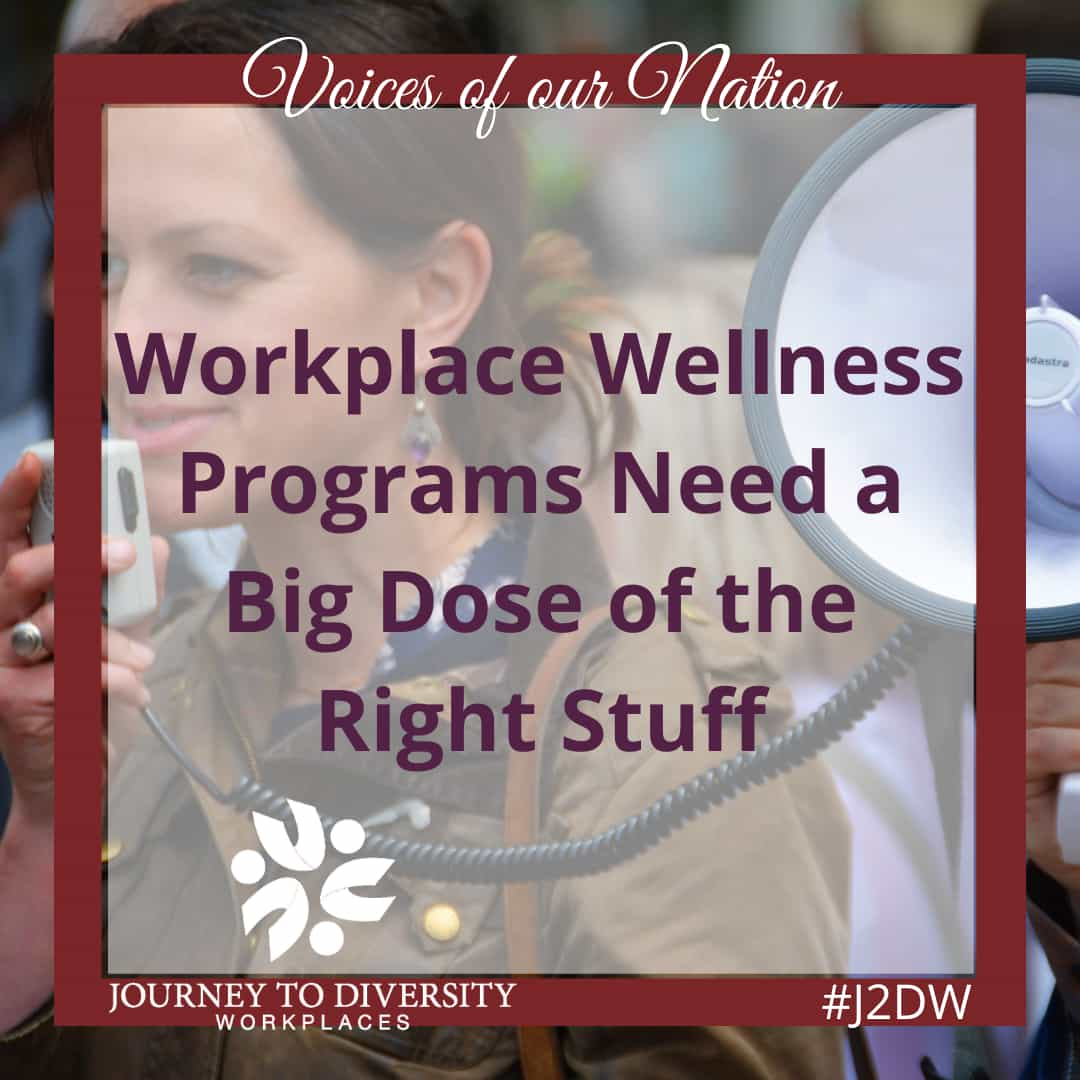Tag: 2016
How to deal with religious accommodations in the Workplace
Freedom of religion, in Canada, is a constitutionally protected right that allows religious believers the freedom to assemble and worship without limitation or interference. Religious discrimination is treating individuals differently in their employment because of their religion, their religious beliefs and practices, denying their reasonable request for accommodation or a change in a workplace rule or policy that denies employees equal opportunities due to their religious beliefs or practices. Canadian employers are required to accommodate the reasonable needs of religious employees in the workplace.
A workplace accommodation is any change in the working environment that allows a person with limitations in their abilities to do their job. These can include changes to physical workspace, adaptations to the equipment or tools used, flexible work hours or job sharing, relocation of the workspace within the greater workplace, the ability to work from home, reallocation or exchange of some non-essential tasks for others, or time off for medical appointments. Accommodations can be temporary, or long term, depending on the employee’s disability or medical issue.
In Canada, the limits to accommodation are described as either a “reasonable” accommodation or an accommodation to the point of “undue hardship.” In Ontario, under the Ontario Human Rights Code, three criteria are used to determine whether undue hardship exists which are cost, whether other sources of funding are available or health and safety requirements that may exist. Canadian employers are required to accommodate the Sabbath observance of their employees by permitting employees to take the day off unless doing so would create a hardship for their employers. Each Canadian province and territory has human rights legislation that covers religion protections.
The Ontario Human Rights Code makes religious discrimination illegal. Everyone should have access to the same opportunities and benefits. Religion includes the practices, beliefs and observances that are part of a faith or religion. Religion does not include personal, moral, ethical or political views. Religion also does not include religions that promote violence or hate towards others, or that violate criminal law. Christianity is the largest religion representing approximately sixty seven percent of the population while Muslim is the second largest religion accounting for three percent of the Canadian population. However, approximately twenty four percent of the Canadian population have no religious affiliation. If employees are asked to do something that would violate their religious beliefs, practices or customs, they may be able to get an exemption from these requirements for religious reasons. People should be treated with equal dignity, and respect, regardless of their religion. Workplaces can improve employee satisfaction and productivity by helping employees feel like they can be themselves and not having to hide a part of themselves in the workplace.
Harassment is a form of discrimination. Harrassment involves any unwanted physical or verbal behavior that offends or humiliates someone. Harassment is usually behavior that persists over time. However, serious one-time incidents can sometimes be considered as harassment. Bullying is usually seen as acts or verbal comments that could ‘mentally’ hurt or isolate a person in the workplace. Bullying usually involves repeated incidents or a pattern of behavior that is intended to intimidate, offend, degrade or humiliate a particular person or group of people.
The cost of accommodations for individual employees can be a significant concern as some workplaces lack the resources to effectively meet the needs of their employees. A reasonable accommodation can vary from employer to employer which may not adequately address the needs of the individual employees. Accommodating an employee could cause the unintended consequence of sterotyping the employee which could increase incidence of bullying or harrassment. Accommodations for attending religious services increases absenteeism, which can lower workplace productivity, or cause more stress on the other employees. Employers may find it difficult to provide non-religious employees with equal benefits to religious employees when religious accommodations are considered for a specific individual, or group, of employees.
Individuals with disabilities are entitled to be included in the workforce. Treating people equally does not always mean treating them the same. In some situations, equal treatment for employees with disabilities may require different treatment. It is important to remember that disabilities do not fit into a single category. While we all have an idea as to what constitutes a disability, these preconceived ideas are often quite limited. Employers have an obligation to accommodate workers who have a disability. This accommodation must be provided in a manner that respects the dignity of the person. There are no prescribed formulas for accommodations as every case is unique and should be pursued based upon the individual medical and employment realities. The interests of a workplace are best served by retaining people with injuries Retaining them means knowing how to plan and implement workplace accommodations. By effectively accommodating its employees a workplace cultivates a competent, effective, diverse and healthy workplace environment that can benefit everyone in the workplace.
Sources: Benefits Canada
Canadian Centre for Occupational Health and Safety
Ontario Human Rights Commission
Statistics Canada
This article was contributed by volunteer blogger Shan Simpson
Related articles
Why No One Talks About Leveraging Workplace Diversity Anymore
Diversity is a variation and variety of differences within a group of people. Leveraging workplace diversity fosters an inclusive workplace where diversity and individual differences are valued and leveraged to achieve the vision and mission of the organization. Diversity is an inclusion of individuals representing more than one national origin, color, religion, socioeconomic status or sexual orientation. In the workplace, a diverse group of people can be considered as a team. Diversity extends beyond gender, race, age, education, disability, religion, sexual orientation, background, and family situations. Our challenge is to build a workplace where everyone feels valued and respected. There are several benefits of workplace diversity. However, the differences between people can have positive or negative consequences depending upon if these people are being effectively utilized within the workplace.
Inclusion is a feeling of belonging, being treated fairly, and providing people with an equal opportunity to be successful in the workplace. Employees should feel comfortable about their workplace environment, be allowed to express their appropriate ideas, be encouraged to collaborate with other employers or employees to develop strategies for solutions to workplace issues, and also be fully engaged as a productive member of a team. Individual employers and employers’ ideas should be allowed to remain genuinely authentic, because their specific life experiences, skills, or ideas can be a significant asset to a workplace.
An inclusive workplace enables workplaces to embrace the diversity, richness of backgrounds and perspectives of our people. Inclusion also encourages workplaces to leverage their employees’ diverse talents to arrive at effective organizational solutions. Inclusive workplaces allow everyone to have equal access to opportunities. There is also open communication and information sharing as well as shared accountability and responsibility. Research has shown that a diverse and inclusive workforce is more productive and innovative. The diversity of Canada’s population is expected to increase significantly in the next two decades which should provide more opportunities to strengthen workplaces by infusing a wider range of beneficial ideas through inclusiveness. By 2017, visible minorities are expected to represent one in five people in Canada’s available workforce. However, workplaces are still reluctant to employ visible minorities as approximately 17% of Canada’s visible minorities are currently employed.
The benefits of having cognitive diversity in the workplace are generally the same benefits that workplaces try to attain through strong leadership and great communication. Cognitive diversity is considered as a more inclusive and collaborative form of diversity where people feel empowered to create and implement their ideas. This type of diversity can create a workplace environment of ingenuity and innovation when various diverse groups come together to successfully with the common purpose of obtaining the goals of the workplace.
There are different levels of cognitive diversity which are the primary, secondary, and organizational levels. The primary level consists of the legal aspects of diversity. This level factors are generally more focused on compliance to various laws or requirements regarding age, ethnicity, sexual orientation, physical or mental abilities, race, and gender of employees. The secondary level considers workplace factors such as social status, nationality, location, and the overall level of educational experiences. The secondary level also is concerned with the personal differences of individuals composing the workplace teams. The organizational level considers the level of effectiveness at which people are operating within a business. The organizational level introduces factors such as proper team functioning, workplace location, team division or sector issues and career motivation. This level also aims to improve the interactions and communication within the workplace. An analysis of problem-solving techniques is also generally conducted at this level of cognitive diversity.
Substantial criticisms of cognitive diversity exist as some people question its effectiveness after cognitive diversity is implemented in the workplace. Cognitive diversity requires that employers help the individual employees become fully aware of their strengths and weaknesses. The cost can be significant in regards to developing techniques that allow each employees’ strengths and weaknesses to be properly identified. Workplaces, with limited resources, may find it to be impractical to adequately address employee weaknesses even though doing so could improve the overall quality of a workplace. Dividing people into diverse groups or teams could potentially create more workplace issues if people in the teams are not willing to cooperatively work together to achieve the workplace goals. People can process information differently which makes it challenging to use resources effectively to develop training programs that will maximize the potential of the individual employees. Cognitive diversity assumes that people can work together and realistically some people may always struggle to relate to their team members in order to be able to work cooperatively with them. It can also be challenging for employers to fully understand each interaction that takes place between their employees, especially when some interactions can be “hidden,” or non-verbal communication, to come up with solutions to barriers to communication and other important factors that can negatively impact a workplace.
Workplaces should assess whether cognitive diversity will be beneficial to their organization. A workplace’s success typically depends upon its ability to embrace diversity and also to realize the benefits of diversity. However, taking full advantage of the benefits of workplace diversity is not without its challenges such as communication barriers, resistance to change, ineffective implementation of diversity policies, and improper workplace diversity management. Strategies should be developed to effectively address these barriers to allow workplaces to be more productive and successful. Attitudes toward diversity originate at the top and filter down to the employees. Management cooperation and participation is required to create a culture that is conducive to the success of an organization. A diverse workforce that feels comfortable communicating varying ideas and experiences can assist a workplace to achieve its objectives and goals.
Source: Statistics Canada
This article was contributed by volunteer blogger Shan Simpson
Related articles
This what happens when Ontario is more accessible
Disabilities are a significant concern in Canada due to an aging Canadian population. Approximately 3.8

million Canadians have a disability. The Accessibility for Ontarians with Disability Act, or AODA, was designed to improve the accessibility standards for Ontarians with disabilities. The Accessibility for Ontarians with Disabilities Act became law in 2005. The AODA was a statute enacted in 2005 for the purpose of improving accessibility standards for Ontarians with physical and mental disabilities by 2025. The AODA requires public and private sector organizations to comply with mandatory standards that remove and prevent barriers to accessibility for people with disabilities. From the AODA came the Accessibility Standards for Customer Service in 2007 and Integrated Accessibility Standards Regulation in 2012.
The AODA is made up of five standards with a standard covering an aspect of daily living. These standards are the customer service, employment, design of public spaces, transportation, information and communication standards. The deadlines for compliance range from 2010 to 2021. The customer service standard was the first standard to come into effect and all of Ontario’s businesses should be compliant to this standard. Businesses are required to let the Canadian government know of their compliance by 2017.
The customer service standard is intended to make an organization’s customer service operations accessible to disabled people. Accessibility is not just about complying with a law, but also about giving consumers with disabilities the opportunity to use or buy services. The customer service standard establishes requirements for the provision of accessible customer service. This standard applies to all organizations that provide goods or services either directly to the public or to other organizations and that have one or more employees in Ontario. The Integrated Accessibility Standards Regulation requires that private and not-for-profit businesses with fifty or more employees, who operate in Ontario, must provide accessible formats and appropriate communication for goods and services to people with disabilities. If services are unable businesses should let disabled people know how long disruption of these services are going to last. Customers should be asked about feedback regarding eliminating any barriers that may have been overlooked and it is important to respond to any feedback that is received. A business plan or policy should be posted publicly when a strategy is developed to eliminate barriers for the customers.
The employment standard is intended to help organizations support and keep more skilled employees. The AODA defines an employee as someone who works seasonal, full-time, part-time, is contracted, or a non-volunteer. The purpose of the employment standard is to integrate accessibility into regular workplace process and to ensure that employers provide for accessibility across all stages of the employment cycle. This standard makes accessibility a normal part of finding, hiring and communicating with employees who have disabilities.
The design of public spaces standard is an accessibility standard that is part of the AODA’s Integrated Accessibility Standards Regulation. This standard regulates the design of newly constructed or redeveloped spaces used by the public. The elements covered bythe design of public spaces standard include exterior spaces such as sidewalks and other pedestrian walkways, parking lots, outdoor public use eating areas, beach access routes, recreational trails and playgrounds. The requirements of this standard are also included for some design elements associated with providing public access to services.
The transportation standard requires transportation services to prevent and remove barriers so that people with disabilities can more easily access transportation services across Ontario. Requirements for accessible transportation apply to organizations that offer transportation services to the public or to employees. Organizations providing transportation services are required to establish, implement, maintain, and document accessibility training policies or procedures that are specific to transportation-related duties concerning disabled people.
The information and communication standard helps people with disabilities access sources of information that many of us rely on every day. The main goal of this standard is to promote an inclusive design of information and communication platforms. The information and communication standard specifies requirements to prevent and remove barriers to persons with disabilities when creating, conveying, distributing, obtaining and receiving various information or communication by organizations. Accessibility is not just about complying with the law.
Workplaces should be compliant to the AODA standards. Ontario should be a place where everyone has a chance to be successful. An improvement in the accessibility of workplaces could create more job opportunities for disabled people which would significantly benefit Canadian workplaces. Training can implemented that will allow workplaces to understand these standards. Canada will benefit if everyone has access to places, people, and experiences. As the Canadian population ages, the number of people with disabilities will rise. It is estimated that seniors and people with disabilities represent twenty to twenty five percent of the Canadian recreation, retail, entertainment, workplace and housing marketplaces in the next ten years and beyond. Ontario benefits daily from the many contributions made by people with disabilities. Consumer spending increases when businesses are accessible which stimulates the Canadian economy. Greater accessibility can help to prepare Canada for a better future and also would provide a better quality of life within Canada.
This article was contributed by volunteer blogger Shan Simpson
This may be the future for diversity!
The future of diversity, what exactly is it? And how does it apply to the workplace environment and the employee?
The possible future of diversity may evolve based on how we think about topics related to diversity. For years, we have known that diversity plays a major part in creating an organization that is capable of functioning better in the long run.
The future of workplace diversity is becoming more reliant on how we think about others and our surroundings in all workplaces. Some studies have shown that if people are more educated about diversity and human rights, it has positive effects which can increase productivity in the workplace.
The topic of diverse thinking is not a relatively new topic. It has been around for a few years. Diverse thinking may have a chance to be able to grow and become a more recognizable topic.
There are a few tips that can be used as guidelines:
- Recreate interview questions, to allow for an honest and open minded answer from potential employees.
- Create a workplace that will offer and encourages new ideas.
This article was contributed by volunteer blogger Samantha Walton and edited by volunteer editor Louis Moran.
Video blog #2.1 – Customer service
How to Deal with Change in the Workplace
Twain
Let’s face it. No one really likes change – especially at work. Sure it’s okay when it involves something we don’t care about, but once it gets personal – we often resist.
Change in the workplace is vital for growth and development, but it can result in stress and have a negative impact on our psyche.
Resistance to change typically happens when our personal needs don’t match the new circumstances imposed at work. Simply put, these two opposing forces don’t connect. There is a driving force trying to promote change (typically your boss) and an opposing force trying to keep things the same (typically you).
Opposition and resistance to change is a very normal reaction – especially when you don’t see the change coming. Typically, resistance starts out strong when the change first happens and depending on how we respond – our level of stress varies. We can either participate and try to get more involved in the change or outright resist, which can sometimes make things much more difficult.
Why do We Resist Change?
The most common response is ‘fear of the unknown’. Most of us enjoy our security and control, and we don’t want to put this at risk – especially if we don’t understand the need for change. Change also has a habit of showing up at the worst possible time, which only magnifies our stress and resentment towards the people who make it happen. Rewarding and productive relationships with bosses can quickly be replaced by mistrust and stifle any potential change advantages.
Imagine a stressful change you experienced at work and how you reacted? If you could go back in time and help implement that change differently to reduce stress – what would you do? Interestingly, most people would recommend that communication is one of the most important steps to implement any change.
Instead of just quickly implementing something new, what if management got more people involved in the potential change early and asked for input and participation in making the change – would this improve the response and help reduce stress? As managers, it’s crucial to take a step back and understand the nature of people’s resistance – to help overcome any perception barriers to change. By communicating effectively and focusing on ways to reduce resistance to change, the results and implications can be much more positive.
Can Change be Positive?
I’m sure we’ve all been through a stressful change in our lives that ultimately led to something more positive in time. Maybe it helped us change our habits or helped to bring a new opportunity into perspective. It’s always beneficial to avoid getting stuck in old routines, and ways of thinking. Change can often be very beneficial when it comes to new ways of doing things, and each experience can ultimately make you stronger. Most people that become comfortable with change tend to be more flexible and open to adapt to new situations and challenges. Being outside your comfort zone might not be that pleasant, but it can help to build your self-confidence and personal development.
Our opposition to change is very natural and for any organization that wants to grow, understanding our resistance and how to manage it is essential. The trick for all of us when it comes to change is to be open and try to see the bigger picture. Look for positive ways to either overcome the change or provide constructive feedback to help improve the potential outcome. At the end of the day, most of us agree that change can make for a better tomorrow and when we’re in control of change – it helps make for a better today.
References
Boohene, R. (2012). Resistance to Organisational Change: A Case Study of Oti Yeboah Complex Limited. CS Canada. Retrieved August 24th, 2016 from http://cscanada.net/index.php/ibm/article/view/2293
Heathfied, S. (2016). How to Reduce Employee Resistance to Change. The Balance. Retrieved August 24th, 2016 from
https://www.thebalance.com/how-to-reduce-employee-resistance-to-change-1918992
Lawrence, P. (1969) How to Deal with Resistance to Change. Harvard Business Review. Retrieved August 24th, 2016 from http://www.forbes.com/sites/lisaquast/2012/11/26/overcome-the-5-main-reasons-people-resist-change/#24c51d183393
Lorenzi, N. (1999). Managing Change: An Overview. Journal of the American Medical Informatics Association. Retrieved August 24th, 2016 from http://pubmedcentralcanada.ca/articlerender.cgi?accid=PMC61464
Quast, L. (2012). Overcome The 5 Main Reasons People Resist Change. Forbes. Retrieved August 24th, 2016 from http://www.forbes.com/sites/lisaquast/2012/11/26/overcome-the-5-main-reasons-people-resist-change/#24c51d183393
This article was contributed by volunteer blogger Patrick Boshell and edited by volunteer editor Thomas Sosnoski.
Video Blog #2 – Diversity in the tech sector
Why you should forget everything you learned about medical appointments!
I was thinking in the shower today about medical appointments. I have previously written on this topic.
Many, or most, hospitals in Toronto now offer diagnostic tests 24/7 by appointment. My own father has had several at Princess Margaret Hospital to follow cancer treatment he had a few years ago. These include CT scans, MRI, x-rays, etc.
Nurses, as you well know, work eight or twelve-hour shifts. So why can’t doctors?
Let’s say we have two oncologists. Why can’t Oncologist A work days Weeks 1 and 3, and nights Weeks 2 and 4. With Oncologist B working days Weeks 2 and 4, and nights weeks 1 and 3. And when I say nights, I mean 8 pm to 3 am to accommodate those who work evenings and nights.
The funny thig is, I’m certain you won’t have a problem finding people who want this!
So why aren’t we doing it already? So many professionals work shift work. Emergency Department doctors work shift work. So why can’t the doctors who run our oncology clinics, or renal clinics work shift work?
I think we need to have a conversation on how our healthcare providers work with our professors/school, employers, landlords, etc. Everyone probably tells you that “your health comes first.” That’s total BS. Without money to pay the rent, and purchase groceries, the treatment means nothing.
It’s time we put patients first. It’s time for us to stand up and ask for better services.
Case in point – Here in Barrie we didn’t have in-centre dialysis. That meant if you were admitted to the hospital, you had to be transported to another hospital for dialysis. Almost 2 years ago I started writing letters to the CEO of the local hospital, and this past April I cut the ribbon for the new dialysis unit.
So let’s have the conversation and improve patient health by offering clinical appointments 24/7.
Workplace Wellness Programs Need a Big Dose of the Right Stuff
Workplace wellness is any workplace health promotional activity or organizational policy designed to support healthy behavior in the workplace. Employee wellness programs is an attractive benefit for potential employees and major perks for existing employees. Before instituting a wellness program, workplaces should carefully weigh the costs and benefits to determine if initiating a wellness program will serve the needs of the workplace.
Chronic diseases such as depression and hypertension can have a variety of negative impacts on an employee; decline in the overall health, an increase in health-related expenses, lower productivity, as well as days of work missed. Some workplaces have realized the benefits of health promotion, and to curb the costs of rising health care, employers offer workplace health programs to their employees. Ideally, the office should be a place protecting the safety and well-being of employees while providing them with opportunities for better long-term health.
Employee wellness programs can boost office morale and strengthen employee relationships. Whether a workplace institutes a weight loss challenge, a runners group or an on-site gym, the workplace can bring employees together who have a shared interest. Changing how employees interact and support one another can translate to a more supportive and a positive work environment overall.
The cost of employee wellness programs is something that every employer must weigh. Obviously building a gym or bringing in a nutritionist will cost money. Some workplaces may not have the sufficient resources available to implement wellness programs. Workplace wellness programs also include policies intended to facilitate employee health, including allowing time for exercise, providing on-site kitchens and eating areas, offering healthful food options in vending machines, holding “walk and talk” meetings, and offering financial and other incentives for participation. Effective workplace programs, policies, and environments that are health-focused and worker-centered have the potential to significantly benefit employers, employees, their families, and communities.
However, a workplace wellness programs may inadvertently discourage employees from participating in the company’s health benefits. The health within the workplace is made up of numerous factors and some are out of a person’s control. Some employees can be genetically predisposed to high blood pressure, high cholesterol, and even diabetes, and it is important to take these factors into consideration when developing an effective wellness program for a workplace. For some employees, the idea of required participation in a wellness program is intimidating. If an employee doesn’t reach the workplace’s goal and money is involved, it can potentially add stress within the workplace.
While it remains unclear how well workplace wellness programs are doing at achieving all of their original goals, one thing that is clear is that there are benefits to both the employee and the employer. Wellness programs have led to higher productivity, lower absenteeism with a greater job satisfaction and commitment by employees. By covering the cost of a wellness program, or even just covering a portion of the cost, employers have the ability to take the cost burden of the most efficient programs off of their employees’ shoulders. Investing in clinically-proven wellness programs fosters healthier, more productive, and happier employees. Making wellness a priority by providing incentives can attract the best employees to your workplace. It shows that a workplace will care about the well-being of your employees which will make the top employee prospects want to work for you. Between health benefits, financial incentives, and possibly even improved job satisfaction, workplace wellness programs may be worth implementing in the workplace.
This article was contributed by volunteer blogger Shan Simpson and edited by volunteer editor Parul Datta.


